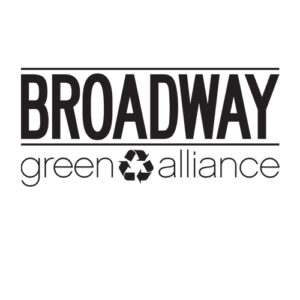
There are a number of ways your production can improve the energy efficiency of the theatre, offices, dressing rooms, and other backstage areas. Switching to energy efficient lighting is one way for theatres to have a positive impact on the environment as well as lower energy costs. For an additional list of energy efficiency tips, visit NRDC’s Energy Efficiency page.
Use energy efficient lighting like CFLs and LEDs throughout the space wherever possible, and consider installing motion sensors in backstage and storage areas that are not frequently occupied.
In rooms without motion-sensor lighting, post notices by all light switches (especially in bathrooms) reminding people to turn off the lights when leaving the room.
Use the U.S. EPA’s free online Energy Star calculator to calculate savings from energy efficient lighting.
Use power strips in offices, rehearsal rooms, and other backstage areas to avoid wasting energy when appliances aren’t in use. Remind cast and crew to turn off all computers, printers, sound systems, and any other electronic equipment at the end of the day. Even when you think equipment is off, the “standby” consumption might be equivalent to that of a 75 or 100 watt light bulb running continuously.
During the day, activate energy saving features on computers such as turning off screen savers, which use more energy than just leaving the computer on.
Use only the air conditioning that you need for rehearsal, and make sure any air conditioning units are turned off at the end of the day.
When purchasing new energy-consuming products for the theatre space, consider buying the most energy-efficient model that fits your needs. Visit the federal government’s Energy Star products database for listings of the most energy-efficient products on the market, from computers and televisions to boilers and central air conditioning units. For product categories that are not rated by Energy Star, consult the Federal Energy Management Program’s procurement guide. Look for energy-saving features such as programmability and power-saving functions.
Also consider including Energy Star and energy efficiency specifications in requests for proposal and contracts. Contract language examples and additional product specifications can be found at EPA’s Environmentally Preferable Purchasing Database.
Use the U.S. EPA’s free online Energy Star calculator to calculate savings from energy-efficient products.
Use power strips, and post signs in dressing rooms reminding cast members to turn off lights, air conditioning, and electronics when they are not in use. Encourage staff to unplug electronics, like hair dryers and fans, when they’re not in use.
Consider switching incandescent bulbs in dressing rooms to more energy-efficient bulbs that use less energy and don’t give off as much heat. This can also greatly increase the comfort of cast members. For instance, cold cathode bulbs not only use less energy and generate significantly less heat than incandescent bulbs, but also last longer, have dimming capabilities, and provide excellent color matching. There are a range of energy-efficient CFLs now available in a variety of shades that can meet your aesthetic needs as well. Use the U.S. EPA’s Energy Star website to find the most energy-efficient bulbs that are the right temperature for your dressing rooms.
Energy use is one of the largest environmental impacts in any facility and also one of the highest operational costs. Most energy consumed in the United States comes from coal, which contributes significantly to man-made global warming and also to smog, soot, and numerous negative health conditions. In addition, coal mining – especially surface mining and mountaintop removal – is devastating many of the world’s most ecologically important landscapes and ecosystems.
Reducing energy use can have a positive impact on all of these issues and reduce energy costs. EPA’s Energy Star program rates electronic products on energy use and grants their seal to those products that meet their standards.
Reduce, Reuse, Recycle: Broadway Should Go Green
The Eco-Savvy Traveler Guidebook: A Look Inside


The Broadway Green Alliance (BGA) is an industry-wide initiative that educates, motivates, and inspires the entire theatre community and its patrons to implement environmentally friendlier practices on Broadway and beyond. The BGA was founded in 2008 in collaboration with the Natural Resources Defense Council. The Broadway Green Alliance is an ad hoc committee of The Broadway League and a fiscal program of Broadway Cares/Equity Fights AIDS. Along with Julie’s Bicycle in the UK, the BGA is a founding member of the International Green Theatre Alliance. The BGA has reached tens of thousands of fans through Facebook, Twitter, Instagram, YouTube, and other media. As a community of industry and environmental professionals connected by the shared goal of normalizing greening practices on Broadway and beyond, the BGA has successfully implemented significant sustainability reform at the forefront of the industry.
Read Full Profile© 2021 TheatreArtLife. All rights reserved.

Thank you so much for reading, but you have now reached your free article limit for this month.
Our contributors are currently writing more articles for you to enjoy.
To keep reading, all you have to do is become a subscriber and then you can read unlimited articles anytime.
Your investment will help us continue to ignite connections across the globe in live entertainment and build this community for industry professionals.